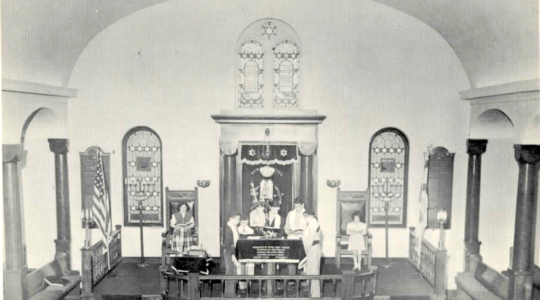My grandfather, may his memory be for a blessing, used to receive hundreds of envelopes from charities. Every month, he would work through the stacks of solicitations and joyfully write out checks for $5, $10 or $18. Though he was a retired butcher and not a wealthy man, he knew what it was like to experience hunger from his teen years spent suffering in various concentration camps. After the Holocaust, he came to America with nothing but the charitable largesse of Yeshiva Rabbi Chaim Berlin. That he was able to build a family and a business and be in the position to give back to those in need motivated his check-writing habit.
There’s something beautiful about my grandfather’s generosity. Yet as his generation peters out, this way of giving is becoming a relic of simpler days. Donors have gotten savvier. Before they open their wallets, they’re far more likely to research a charity on GuideStar or Charity Navigator, visit the charity’s website, and even review lengthy 990 tax forms, which provide the salaries of the highest-ranking staffers, a list of the board of directors, and detailed information about how the charity spends the precious dollars it raises.
This is a good thing. In fact, many of the individual funders I work with on a daily basis at Jewish Communal Fund understand instinctively that being assured of a charity’s good governance and financial stability is important, but not enough. They want to also measure a charity’s impact, to know that their charitable dollars are being stretched to provide the greatest good.
We are all faced with a finite amount of charitable dollars at our disposal; how then do we determine which charities to support, at the expense of other seemingly noble and worthwhile causes?
We can draw inspiration from grant-making organizations that are leaders in the field of metrics-based philanthropy. Robin Hood, New York’s largest poverty-fighting charity that is much favored by hedge funders, has developed a meticulous bottom-line investor approach to determine effectiveness and achieve what it has calculated as a 12:1 return on its charitable investments. I had the opportunity to learn more about Robin Hood’s “Relentless Monetization” system at a luncheon organized last week by the Jewish Funders Network, which was graciously sponsored by Mark Pearlman as part of The Jewish Week’s “Jewish GDP Project.”
In comparing competing grant proposals, Robin Hood uses sophisticated models to estimate how much a grant will raise the living standards of low-income New Yorkers. According to research cited by economist Michael Weinstein, Robin Hood’s chief program officer, graduating high school is the most important step to getting out of poverty. High school graduates earn $6,500 more a year throughout their careers (as compared to those without a high school diploma). They also live, on average, two years longer in better health, a benefit that Robin Hood has calculated to be worth $100,000.
Robin Hood takes the added (and rare) step of ensuring it doesn’t overstate its impact. First, it corrects for counter-factuals — for example, it determines how many students would graduate high school without its grant, and doesn’t claim credit for them. It also corrects for displacement (or “musical chairs”), in which a job created that lifts a person out of poverty comes at the cost of putting someone else back into poverty. “We can’t claim credit for 100 percent of our successes,” argued Weinstein. These corrections “bring the number down of how much good we are doing so that it is closer to the truth.”
Thankfully, this rigorous approach to measuring charitable ROI (return on investment) is becoming more popular in the Jewish communal world. UJA-Federation of New York, which will celebrate its centennial next year, is wading into this world of metrics philanthropy with the launch of the Impact and Performance Assessment Department (IPAD), headed by Judith Samuels, a research scientist. UJA-Federation has a network of 84 agencies to which it provides annual core operating support, in sums that will be based more on how well-managed the organization is and to what extent it advances UJA’s mission, rather than historical precedent. UJA has also launched the Jewish Evaluation Network, comprised of 130 members, to bring resources on utilizing metrics in Jewish philanthropy to more than 50 federations, Jewish nonprofits and foundations.
These trends are positive but they leave us wondering how individual funders can adopt a metrics approach to their own charitable giving. It is my hope that as grant-making organizations like UJA-Federation grow more sophisticated in their data-driven models for evaluating their grantees’ impact, they will embrace a new level of transparency and share results broadly.
In the meantime, donors can ask charities to define their impact in ways that go deeper than colorful infographics detailing the number of clients served, programs organized and funds raised.
For funders of all sizes, though, it’s important to keep in mind the rule with which Weinstein ended his presentation: “Never, ever make grants on the basis of mathematics alone.”
Support the New York Jewish Week
Our nonprofit newsroom depends on readers like you. Make a donation now to support independent Jewish journalism in New York.
Tamar Snyder is the director of brand marketing and communications at Jewish Communal Fund.
The New York Jewish Week brings you the stories behind the headlines, keeping you connected to Jewish life in New York. Help sustain the reporting you trust by donating today.




